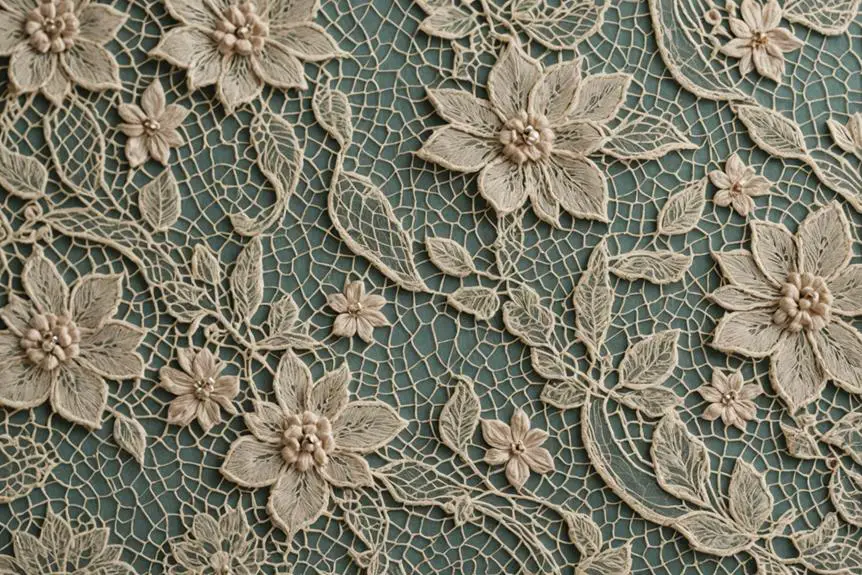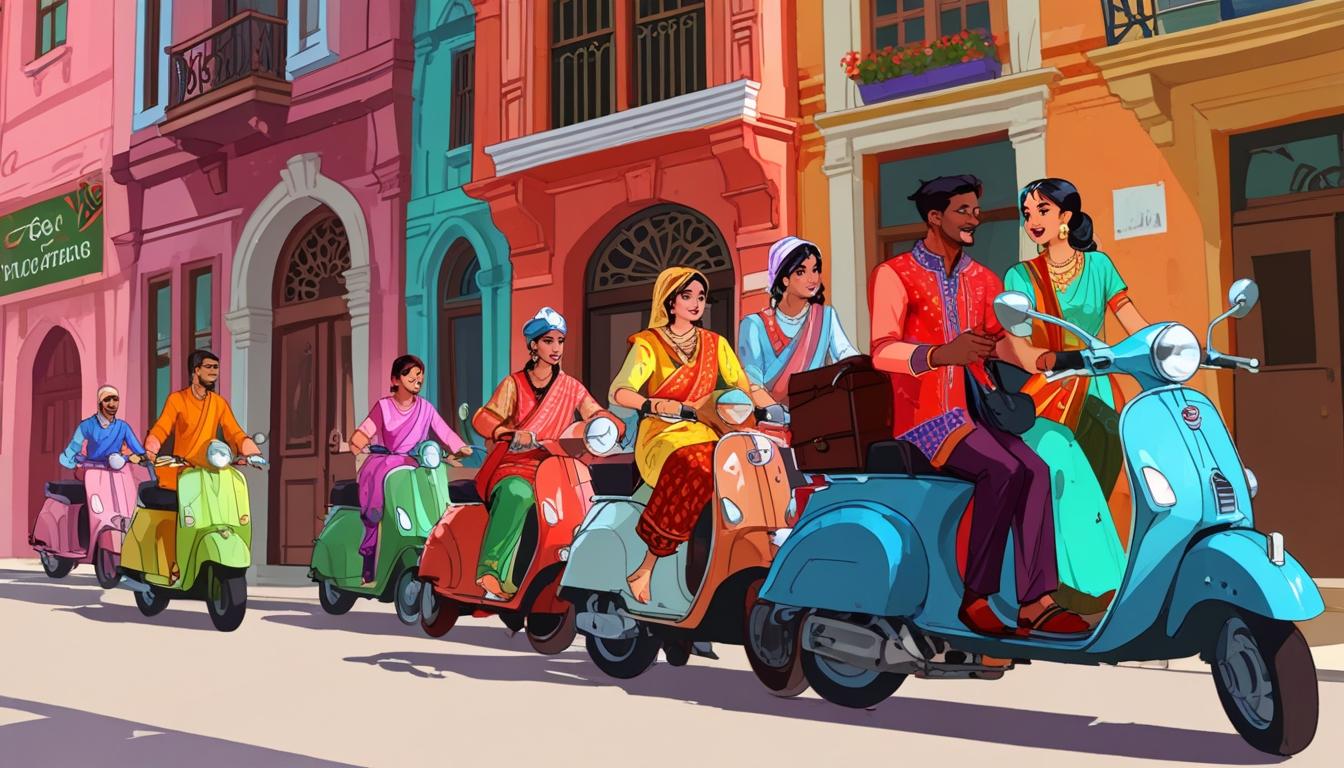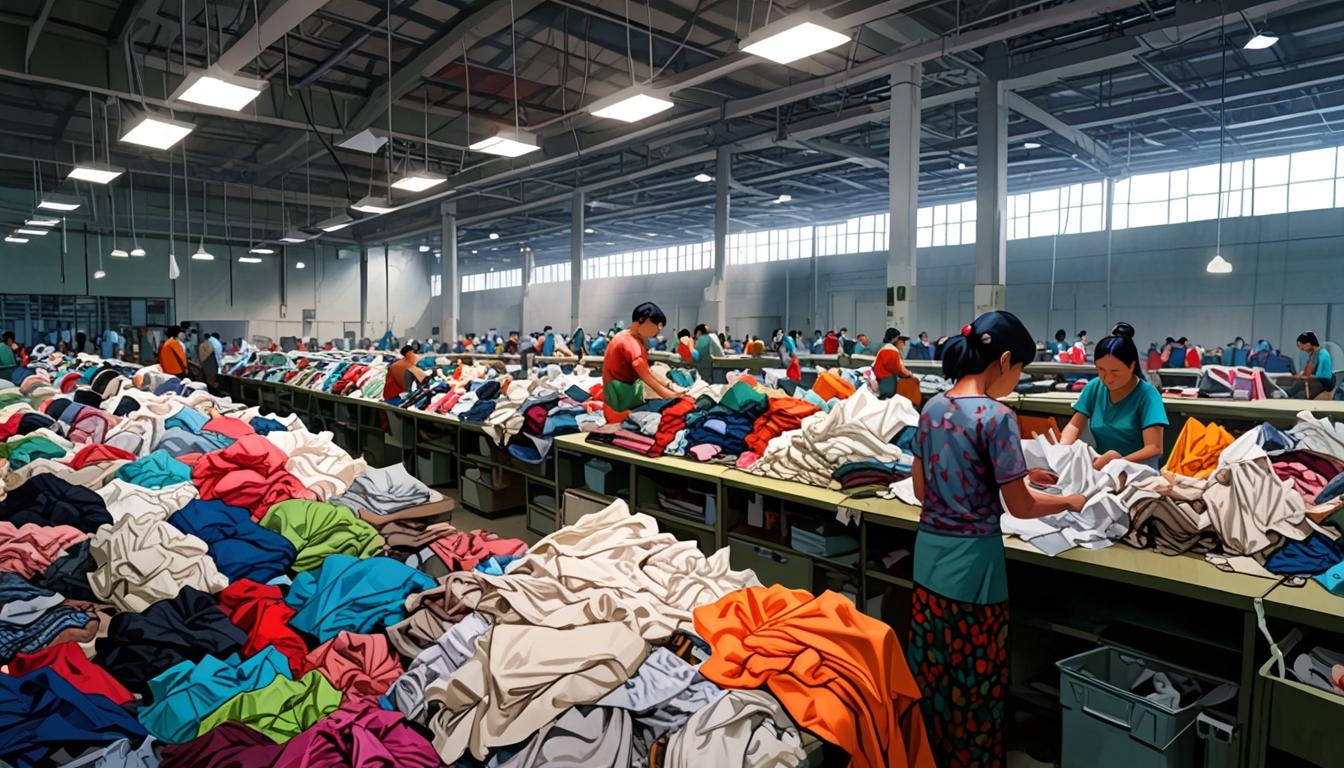When you're trying to identify Argentan lace fabric, there are several key features you should look for. Start by examining the dense designs created through intricate needlepoint techniques, which give it a noticeably heavier texture than lighter laces like Alençon. The unique background mesh often showcases luxurious floral and geometric patterns, and the silky, smooth feel hints at its high-quality silk composition. But there's more to this fabric than just its appearance. Understanding its historical context and craftsmanship can enhance your appreciation for Argentan lace, revealing layers you might not have considered.
Historical Background of Argentan Lace
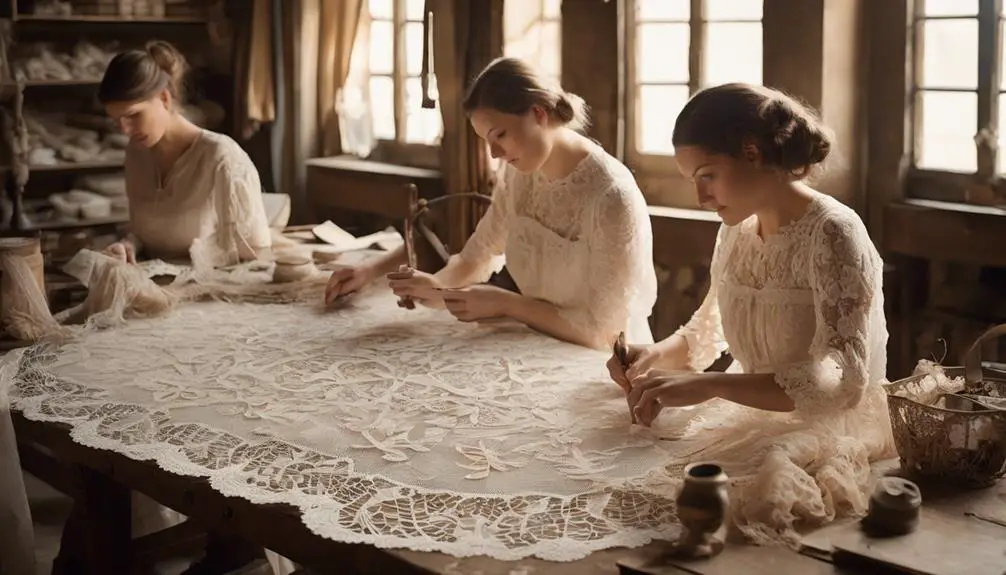
Argentan lace has a fascinating history that traces back to 17th century Normandy, France. Can you imagine the skilled hands that brought this beautiful lace to life? Originally known as Alençon lace, it really started to shine in 1724, grabbing the attention of French and English courts during the mid-18th century. This lace made a name for itself, thanks to its intricate craftsmanship, showcasing stunning floral patterns and geometric designs.
Now, let's talk about how this lace is created. Artisans use a needle to stitch buttonhole stitches, giving Argentan lace a thicker and more luxurious appearance. It's not just any lace; it's a labor of love that requires patience and skill. Think about it—each piece tells a story, reflecting the dedication of those who made it.
One famous moment in Argentan lace history was when Queen Charlotte used it for her wedding train in 1760. Talk about a royal endorsement! This lace symbolized luxury and elegance, setting a standard for lace-making for years to come.
Even though Argentan lace faced a decline in the 19th century, its legacy remains strong. Today, you can find it preserved in museum collections, a tribute to its enduring craftsmanship. So, the next time you see Argentan lace, remember its rich history and the artistry behind those delicate stitches! Isn't it amazing how a piece of fabric can carry so much heritage?
Key Characteristics and Features
One of the most striking features of Argentan lace is its dense designs, achieved through intricate needlepoint techniques. You'll notice how each mesh is carefully stitched over with buttonhole stitches, giving it a thicker and more textured appearance than other lace types. Isn't that fascinating? This lace truly stands out with its unique background mesh, setting it apart from Alençon lace, which can make it easier to identify.
When you look at Argentan lace, you'll often see beautiful floral patterns and geometric shapes that reflect its luxurious origins. It first appeared in Normandy, France, during the 17th century and became a hit in the 18th century, especially among the French and English courts. Imagine the elegance of Queen Charlotte's wedding train adorned with this stunning lace! Talk about a royal touch!
The craftsmanship involved in creating Argentan lace is impressive. Skilled artisans use a combination of stitches to add depth and intricate textures, usually made from silk, which enhances its luxurious feel. If you've ever tried needlepoint lace yourself, you know it requires patience and precision.
Techniques Used in Argentan Lace

Lace enthusiasts will appreciate the meticulous techniques that define Argentan lace. This stunning needle lace is all about precision. You'll find that each piece uses a buttonhole stitch over a background mesh, giving it a thicker, more luxurious feel than other lace types. Can you imagine the patience it takes to stitch those intricate patterns?
Argentan lace isn't just about the stitches; it's a canvas for artistry. The designs often feature beautiful floral patterns, along with geometric shapes, crafted with fine linen or cotton threads. You'll notice how the craftsmanship shines through in every detail. Each piece tells a story of skill and dedication that goes back to the 17th and 18th centuries when it was a favorite among the French and English courts. Talk about regal!
A unique aspect of Argentan lace is its background mesh. This mesh sets it apart from other laces, like Alençon, and adds to its visual appeal. Knowing this detail can help you appreciate the craftsmanship even more. When creating these lace masterpieces, artisans typically draw out the patterns on fabric first. This guide keeps everything aligned and neat, which is essential when you're working with such fine materials.
Comparison With Other Lace Types
When comparing lace types, Argentan lace stands out for its distinct characteristics. You'll notice right away that it has a heftier look compared to lighter laces, like Alençon. Why is that? Well, it uses buttonhole stitches to create dense designs, giving it a thicker appearance. That's not all—Argentan lace features a unique mesh background that's quite pronounced, setting it apart from other lace types.
Now, let's talk about Brussels lace. Both Argentan and Brussels lace boast intricate patterns that can make your eyes dance with delight. However, Argentan lace often has a more structured and weighty vibe due to its stitching method. If you're looking for something refined yet sturdy, Argentan lace might just be your match!
You might be wondering how it compares to Carrickmacross lace. While Carrickmacross uses appliqué techniques, Argentan lace sticks to needle lace methods. This means that every stitch is a nod to its unique craftsmanship, emphasizing the artistry involved.
Care and Preservation Tips
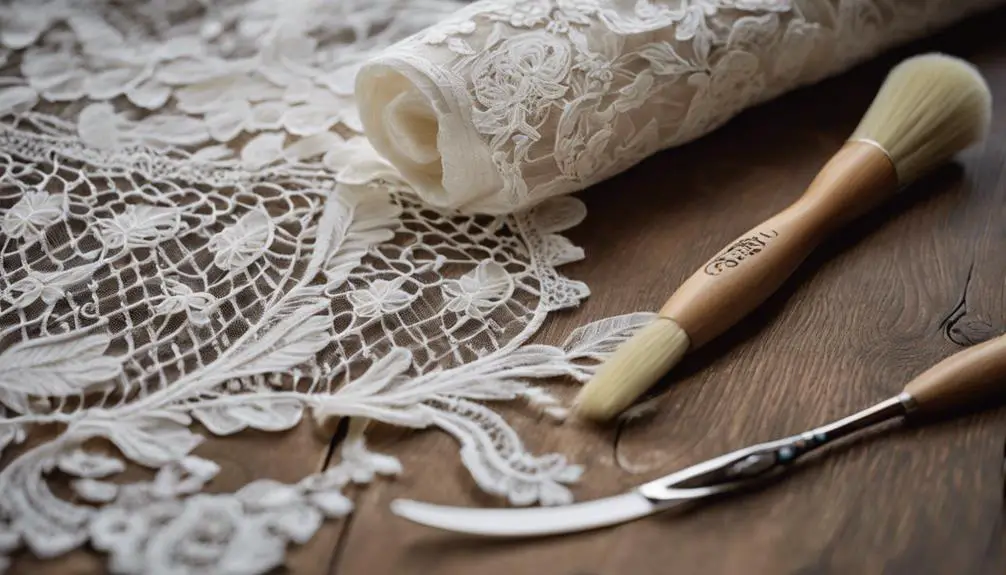
To keep your Argentan lace looking beautiful over time, it's essential to follow some careful care and preservation tips. First off, when you store your lace, make sure it's in a cool, dry spot away from direct sunlight. Trust me, you don't want those delicate fibers to fade or deteriorate!
Next, grab some acid-free tissue paper. Wrapping your Argentan lace in this special paper helps absorb moisture and keeps it from getting creased or crushed. Who likes a wrinkly lace, right?
When it comes to cleaning, think gentle! Hand wash your lace in lukewarm water with mild soap. Avoid harsh detergents like the plague—they can really mess up those delicate fibers. And when it's time to dry, resist the urge to wring or twist it. Instead, lay your lace flat on a clean, dry towel to soak up the moisture.
If you ever need to iron your Argentan lace, remember to keep the heat low! Place a cloth between the iron and the lace to avoid direct contact. You don't want to scorch that beautiful fabric—yikes!
Frequently Asked Questions
How Do You Identify Chantilly Lace?
To identify Chantilly lace, look for its delicate floral patterns and intricate designs that just scream elegance! You'll notice the hexagonal mesh ground, which sets it apart from other lace types. Historically, it's from the 18th century in France, adding to its charm. You'll often find it in wedding dresses and evening wear. And remember, when caring for it, gentle washing is key to keeping those lovely details intact! Isn't lace just magical?
How to Identify Bobbin Lace?
To identify bobbin lace, keep an eye out for those intricate lace pattern variations created with lace making tools. You'll notice the distinctive mesh backgrounds and those cute brides connecting motifs. Check the edges for picot or scalloped finishes; they add flair! Plus, look for slight irregularities—this shows skilled craftsmanship! And hey, remember to follow some lace care tips so your treasures stay beautiful. Isn't it fun exploring historical lace styles?
How Can You Tell the Quality of Lace?
You can tell the quality of lace by looking closely at its characteristics. Are the lace patterns intricate and well-defined? Check the lace textures—smoothness is key! Quality lace weaving shows in the stitching, so finer stitches mean better craftsmanship. Don't forget to feel its durability; high-quality lace has a lovely weight to it. And remember, proper lace care keeps it looking fabulous longer! Isn't it cool how much detail can go into lace?
What Is Vintage Lace Made Of?
When you think about vintage lace, consider the lace fiber types! It's usually made from natural materials like fine linen and cotton, sometimes mixed with silk for that lovely sheen. Vintage lace characteristics shine through its intricate patterns, crafted using traditional lace weaving techniques. Got some? Make sure to follow lace care tips to keep it looking fabulous! And don't forget, sourcing vintage lace can be a fun treasure hunt!
Conclusion
So, there you have it! Identifying Argentan lace is like a fun treasure hunt – you're looking for those rich designs, silky textures, and expert craftsmanship that scream quality. Next time you spot a lace piece, remember to check its background mesh and unique patterns. Isn't it cool how much history and skill goes into every stitch? Whether you're shopping or just admiring, you'll impress your friends with your lace knowledge. Ready to plunge into the world of lace?
